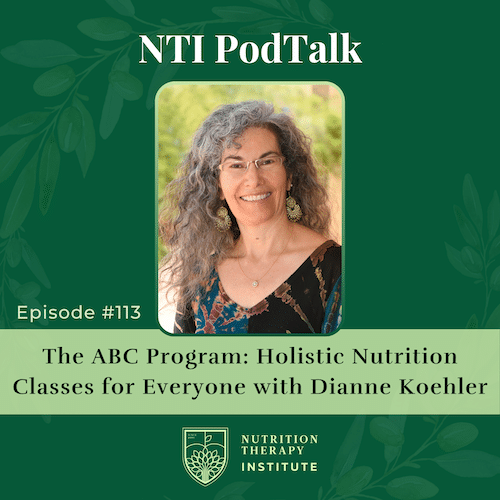
Share this post!
In the last couple years that I’ve spent healing my gut, the days I’ve felt most sick or uncomfortable, I’ve also usually felt quite anxious. This can all come from digestive distress.
It’s hard to feel settled in your skin when your belly sounds like a bad hip-hop concert. Not only is the physical discomfort a burden to bear, but symptoms often include emotional unrest, too.
The good news? There are ways to take the edge off of digestive distress, especially if the cause isn’t due to a persistent underlying ailment. If you suspect you are suffering from a condition that is causing you chronic GI distress, I encourage you to speak with a holistic healthcare professional immediately. Work with someone who can run tests for candida, SIBO, food allergies, secretory IgA, parasites, etc. so that you can get a full picture of your GI health. Learn more about these chronic GI offenders in Digestive Distress Part 1.
4 R’s for Gut Health
In the meantime, remember the “Four Rs” of gut health to maximize your efforts.
Remove offending foods and toxins that may be causing inflammation.
Repair the gut with soothing foods and supplements.
Restore optimal gut bacteria with healthy bugs, or probiotics.
Replace the levels of your body’s natural digestive tools like enzymes, bile salts, and hydrochloric acid.
Consider also how you’re eating. This can be more crucial to digestion than what you eat.
When you take the time to slow down and settle in before a meal, you kick the parasympathetic division of your autonomic nervous system (ANS) into gear. This is the ideal state to be in for optimal digestion and restoration of the body. The ANS is responsible for involuntary bodily functions like heartbeat and metabolism, so if you’re experiencing stress of any kind, your ANS will operate in the sympathetic state, commonly known as “fight or flight”. When the sympathetic response in running the show, the body perceives a threat to its survival and shuts down processes that aren’t immediately relevant, such as hormone synthesis and digestive processes.
If you’re sitting in front of your computer reading this and mindlessly eating, stop! Even screens are too much stimulation for proper digestion.
Once you’ve taken a walk, some deep breaths, or other practices to allow your nervous system to settle, notice whether or not you’re chewing. How well do you chew your food? Pay attention the next time you’re eating, and take plenty of time to physically break down your food before it enters the stomach. Saliva also releases digestive enzymes to kick-start the digestive process.
Other simple tools for aiding digestion include drinking water throughout the day, taking digestive enzymes with meals, and getting regular exercise.
Natural Remedies to Soothe Digestive Distress
If your threshold has been reached and these proactive measures don’t seem to be doing the trick, don’t reach for the Pepto. Utilize the following tools to help alleviate discomfort naturally, without throwing your GI tract further out of whack.
Ginger root
Ginger root contains nutrients that relax the intestinal tract, relieving nausea, stomach cramps, and diarrhea. Chew on a small pieced of ginger root, or sip ginger tea for optimal results.
Fennel seeds
Fennel seeds offer a traditional remedy to soothe cramping, gas, and bloating. In fact, anethole, the oil that gives fennel its licorice flavor, is used to flavor many digestif after-dinner drinks.
Try this Fennel-Orange Salad recipe which uses fresh fennel rather than fennel seeds.
Apple cider vinegar
Apple cider vinegar is especially effective for GERD symptoms. While too much stomach acid is usually pinned as the culprit of acid reflux and indigestion, it is typically due to an imbalance of acid levels that weakens the valve between the esophagus and the stomach, allowing acid from the stomach to move upward. The acidity in the vinegar can help stabilize hydrochloric acid levels and prevent symptoms of acid reflux, bloating, and abdominal pain.
Chamomile tea
Chamomile tea works wonderfully against indigestion and belly distress. An extract in chamomile can reduce inflammation of the mucous membranes that line the entire GI tract, effectively reducing muscle spasms and pain.

Bone broth
Contains very high levels of gelatin, which strengthens the intestinal wall. It can reduce inflammation and aid in absorption of nutrients.
Heat
Put heat on the belly will also help reduce uncomfortable symptoms of GI distress. Use a heating pad or hot water bottle and place it over a layer of fabric to avoid burns to the skin. Lie on your back, breathe deeply, and rest, ideally while drinking some nourishing tea or broth.
Are you inspired by nutrition and want to help people who have digestive distress? Then becoming a Nutrition Therapist Master is the perfect way to do just that! Our Nutrition Therapist Master Certification is science-based and the most comprehensive nutrition training program available today. Get in touch with our admissions team to learn more today!
Anneliese is a certified Master Nutrition Therapist and graduate of NTI. Utilizing personal experience and an extensive background in holistic nutrition, Anneliese targets gut health when working with clients to reverse degenerative and inflammatory conditions.
Images: Image by Dayne Topkin is free for use by Unsplash; Image by Maria Tyutina is free for use by Pexels
Share this post!




















